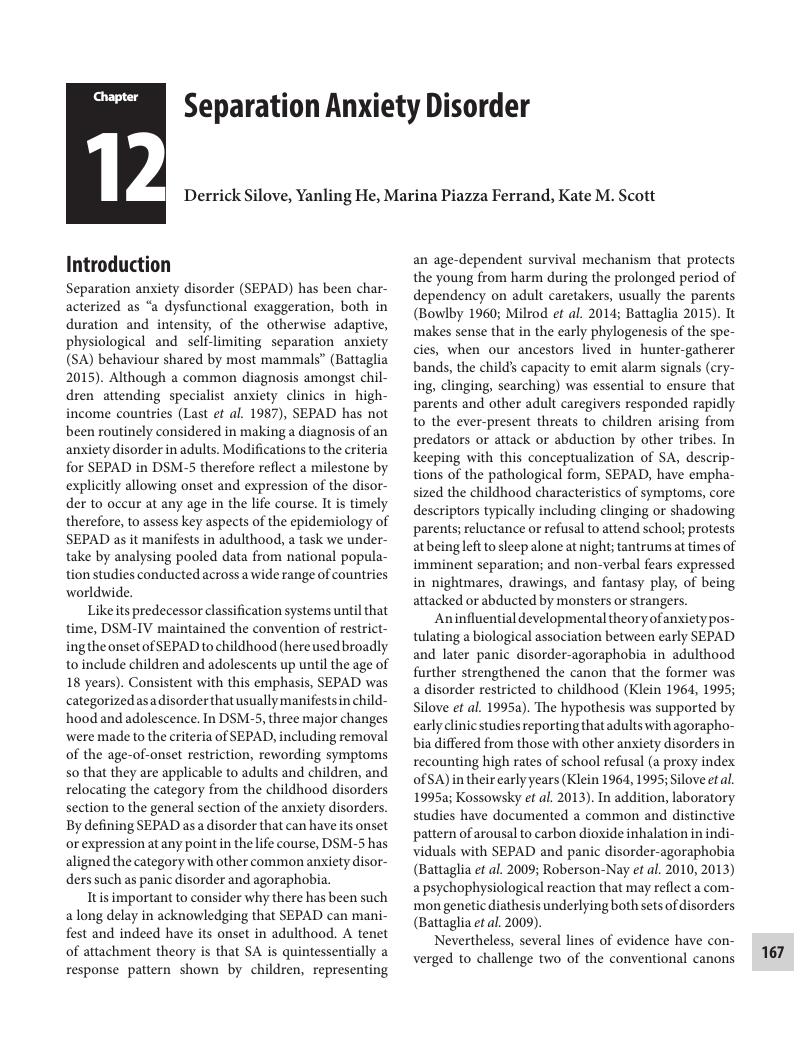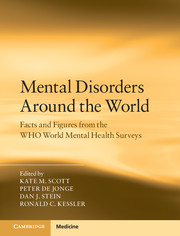Book contents
- Mental Disorders Around the World
- Mental Disorders Around the World
- Copyright page
- Contents
- Acknowledgements
- Contributors
- Section I Introduction
- Section II The Disorders
- 4 Major Depressive Disorder
- 5 Bipolar Spectrum Disorder
- 6 Generalized Anxiety Disorder
- 7 Panic Disorder and Panic Attacks
- 8 Agoraphobia
- 9 Social Anxiety Disorder
- 10 Specific Phobia
- 11 Posttraumatic Stress Disorder
- 12 Separation Anxiety Disorder
- 13 Intermittent Explosive Disorder
- 14 Attention-Deficit Hyperactivity Disorder
- 15 Oppositional Defiant Disorder and Conduct Disorder
- 16 Alcohol-Use Disorders
- 17 Drug-Use Disorders
- 18 Bulimia Nervosa and Binge-Eating Disorder
- 19 Psychotic Experiences
- Section III Overview
- Appendices
- Index
- References
12 - Separation Anxiety Disorder
from Section II - The Disorders
Published online by Cambridge University Press: 28 December 2017
- Mental Disorders Around the World
- Mental Disorders Around the World
- Copyright page
- Contents
- Acknowledgements
- Contributors
- Section I Introduction
- Section II The Disorders
- 4 Major Depressive Disorder
- 5 Bipolar Spectrum Disorder
- 6 Generalized Anxiety Disorder
- 7 Panic Disorder and Panic Attacks
- 8 Agoraphobia
- 9 Social Anxiety Disorder
- 10 Specific Phobia
- 11 Posttraumatic Stress Disorder
- 12 Separation Anxiety Disorder
- 13 Intermittent Explosive Disorder
- 14 Attention-Deficit Hyperactivity Disorder
- 15 Oppositional Defiant Disorder and Conduct Disorder
- 16 Alcohol-Use Disorders
- 17 Drug-Use Disorders
- 18 Bulimia Nervosa and Binge-Eating Disorder
- 19 Psychotic Experiences
- Section III Overview
- Appendices
- Index
- References
Summary

- Type
- Chapter
- Information
- Mental Disorders Around the WorldFacts and Figures from the World Mental Health Surveys, pp. 167 - 181Publisher: Cambridge University PressPrint publication year: 2018



